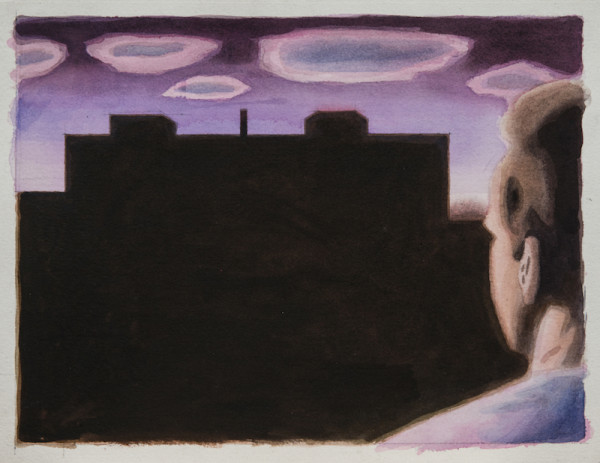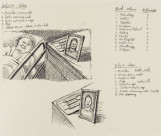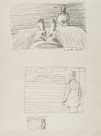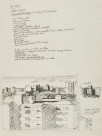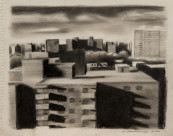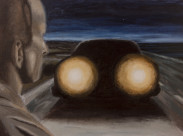Robert had earlier drawn the hospital as part of a cityscape or as seen from his point of view. Now he introduces a surrogate figure to look at the imposing edifice. The image becomes a confrontation of man and place. The building functions as a barricade blocking all access to the city beyond it, but the building is also a projection of the man’s inner fears, as he enters a dark place in his mind. The purple colour adds an eerie unreal feeling, reinforced by the low-hanging clouds at night.
Robert conceived his cancer series in two ways: 1) a procedural account of a patient entering hospital and going through tests and treatments, with support from family, friends and care-givers, meeting with doctors, followed by more tests and reassessments, until the patient’s eventual recovery or death. 2) an account of the inner life of the patient, recording the many mood swings, anxieties and dreams of a person undergoing a multi-year ordeal with a life-threatening illness. Hospital at Night with Watching Man exemplifies both of these approaches. As a procedure, it shows first contact between patient and hospital. As a dream, it evokes a feeling of anxiety and fear of the unknown.
The cancer series was also organized into groups of pictures that shared common themes, such as Technology, Doctors and Patients, Hospital, Treatments, Family, Visitors, Healing, Windows, Night Time, and Religion. The category, “Night Time,” is a bit unusual. Robert may have intended this to include images that convey a patient’s doubts and dark thoughts, as well as conveying dreams and fantasies of escape. The setting of this hospital exterior clearly places it in this Night Time category, as well as in the Hospital category.
